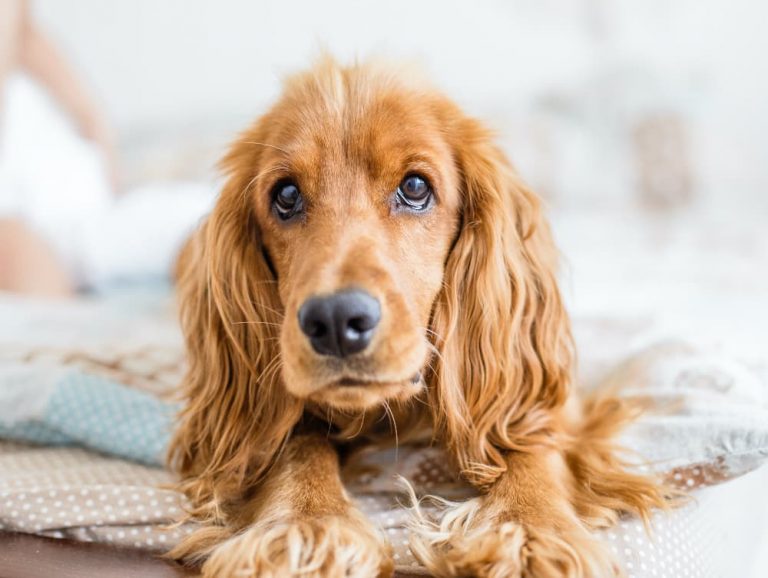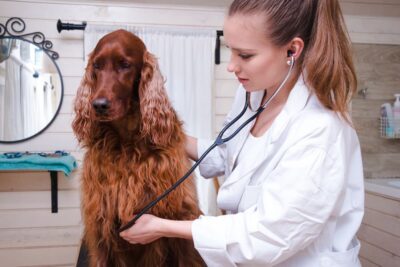6 Dog Breeds With Separation Anxiety

Some dogs are totally chill when you leave the room or house. Others? Not so much.
Leaving a dog with separation anxiety home alone can be a heart-wrenching and stressful experience for you and your pup alike. They might howl and cry as you prepare to leave and, while you’re gone, have indoor accidents, rip up your furniture, or even hurt themselves out of severe anxiety.
If you’re feeling distressed, know that separation anxiety may affect about 20 percent of dogs, according to estimates by the American Veterinary Medical Association. And, as it turns out, some dog breeds may be more prone to anxiety than others.
So, why are certain dog breeds at risk of developing separation anxiety and what can you do to help them relax? Read on for the answers, with insight from experts in dog behavior and breeds.
Can Separation Anxiety Impact All Dog Breeds?
Yep. Dogs of all shapes, sizes, and ages can develop separation anxiety, confirms Irith Bloom, a certified professional dog trainer based in Los Angeles, California.
“Some dogs in their prime of their lives may start having alone-time issues after a move or a death in the family. Others develop it suddenly for no obvious reason,” she says. “Sometimes, there turns out to be a medical cause.”
For this reason, consult with your veterinarian for help if your dog suddenly begins to show signs of separation anxiety.
While a great deal of research has been done on separation anxiety in dogs, it’s unclear what exactly causes it. Chances are, separation anxiety pops up due to a complex combination of genetic and environmental factors, so your dog’s breed could play a role.
High levels of fear, anxiety, and alertness—all of which could contribute to separation anxiety—tend to be more common in certain breeding lines of dogs, explains Dr. Heather Graddy, a relief veterinarian in Englewood, Colorado.
Dog Breeds Prone to Separation Anxiety
Whether you’re considering adopting a pup or already dealing with a tough case of separation anxiety, you might be wondering if your dog’s breed falls on the list of high-anxiety breeds.
Keep in mind that dogs are individuals, so variation is to be expected within breeds when it comes to separation anxiety.
“While it’s reasonable to expect a higher rate of anxiety in a Border Collie than a Basset Hound, there do exist a few lazy Border Collies and high-strung Basset Hounds,” notes Dr. Graddy.
Still, if you’re wondering if your pup *might* be at a higher risk of developing separation anxiety, here are six dog breeds that tend to be on the anxious side:
German Shepherds

German Shepherds are famous for their loyalty, intelligence, and protectiveness. After all, these traits make them top-notch guard dogs.
The problem: “There is a thin, fuzzy line between the level of vigilance that allows a German Shepherd to be great at the job they were bred to do and a smidge higher level of hyper-vigilance that manifests as anxiety,” says Dr. Graddy.
Labrador Retrievers

Labs are America’s favorite dog breed for good reason: They’re relentlessly friendly, fun-loving, and laser-focused on their pet parents. The sight of you (or anyone, for that matter!) often means lots of tail-wagging, and they may very well follow you from room to room.
Like German Shepherds, Labrador Retrievers are bred to work closely with people, says Dr. Mary R. Burch, a certified applied animal behaviorist and the director of the AKC Family Dog Program. As such, they may struggle with anxiety more than other dog breeds when separated from their favorite people.
Cocker Spaniels

Initially bred as hunting dogs, Cocker Spaniels are another breed that tends to spend a lot of time and energy aiming to please their pet parents.
Again, because Cocker Spaniels have been bred to work for you, being left alone could result in separation anxiety, says Burch.
Bichon Frises

Standing at just under a foot tall at the shoulder with fluffy, hypoallergenic white fur and a larger-than-life personality, the Bichon Frise is the quintessential lap dog. “They’re often companion dogs that owners spend a lot of time with or in close contact with, so suddenly being left alone is a big change,” says Burch.
Sadly, Bichon Frises’ penchant for hanging out on your lap or in your purse could potentially put them at risk of developing separation anxiety when you don’t take them along for the ride.
Border Collies

Border Collies are herding dogs built to run, work hard, and perform demanding jobs for their pet parents.
Unfortunately, because they’re so focused on their people, Border Collies are another dog breed that might be at a higher risk of developing separation anxiety, says Burch.
Chihuahuas

If you want a pup you can carry around 24/7, few breeds beat the teeny Chihuahua (which typically weighs in at less than six pounds!). These little yappers can be highly alert, responsive, and pretty darn active for their size.
The main trait that likely makes Chihuahuas susceptible to developing separation anxiety is their bond to you — especially if you tend to spend a lot of time in close contact, says Burch.
Bonus: Adopted Dogs and Mixed Breeds

While we know this category doesn’t technically constitute a specific dog breed, approximately 1.6 million dogs are adopted in the U.S. every year. While some of these pups may be purebred, many adopters won’t be able to pinpoint your adopted dog’s lineage.
Being in a shelter or rescue environment—or negative experience from a dog’s past life—can contribute to a dog’s overall stress and anxiety, no matter what breed or breeds are part of the dog’s genetic makeup. “Separation anxiety can develop when the dog experiences trauma,” says Burch. “A previous owner may have left a rescue dog alone for a long time—the dog might have had biological distress such as being hungry, very thirsty, or needing to go outside.”
Pet parents who are planning to adopt a dog should brush up on the signs of separation anxiety in dogs, and try to ease your dog’s transition to their new home.
If you’re concerned about your rescue dog developing separation anxiety, discuss options with a professional dog trainer or a certified animal behaviorist to talk about how to help your new pet cope.
How to Help Your Dog Deal With Separation Anxiety

The good news? No dog breed is condemned to suffer from separation anxiety forever. As a pet parent, you can help alleviate your dog’s anxiety with a few simple steps.
Here’s what to do if your puppy or dog seems to be struggling with separation anxiety:
Make sure they’re getting lots of exercise. It might surprise you, but not getting enough exercise is the single largest environmental factor associated with separation anxiety in dogs, per a 2015 study in PloS One. Daily aerobic exercise will do wonders for some dogs, as will enriching activities like training classes, food puzzles, and opportunities to explore new spots, says Dr. Graddy.
Be low-key about coming and going. While it’s understandably tempting to fawn over your pup when you leave or come home, a super emotional experience will only make your dog more anxious once you leave, says Dr. Graddy.
The fix: Make a calm exit (“goodbye for now”) and an easygoing return (“hi, pup” plus a quick pat), without the I-missed-you-so-much flurry of affection, suggests Bloom.
Keep ‘em busy. “Some dogs get bored or antsy when left alone because they have nothing to do,” says Bloom.
The fix: Leave your pup with a chew toy or a food-stuffed toy to keep them distracted while you’re gone. Relaxing music or talk radio might help soothe your pup, too, adds Dr. Graddy.
Stick to the routine. Like us, pups thrive on predictability, which helps tamp down anxiety because they simply know what to expect. As your work life allows for it, try to come and go at the same time according to the same ritual
And if you have to run out multiple times a day, try to combine your errands into one departure and get everything done in one shot. Typically, the most high-anxiety time for dogs is right after you leave, notes Dr. Graddy.
If you’ve tried all of the above and your dog still loses it every time you leave, consult with your veterinarian for professional help, says Dr. Graddy.
An individualized treatment plan might include specialized training, anti-anxiety tools or toys, or calming supplements, which could help your dog rest a little easier (or perhaps even enjoy themselves!) while you’re gone.









